
26.07.2023
The Brazilian translator, artist and researcher Vinicius da Silva writes about her encounter with Revenguê, the planet fictionalized by Yhuri Cruz at the Rio Art Museum. Lines of escape from hegemonic narratives.
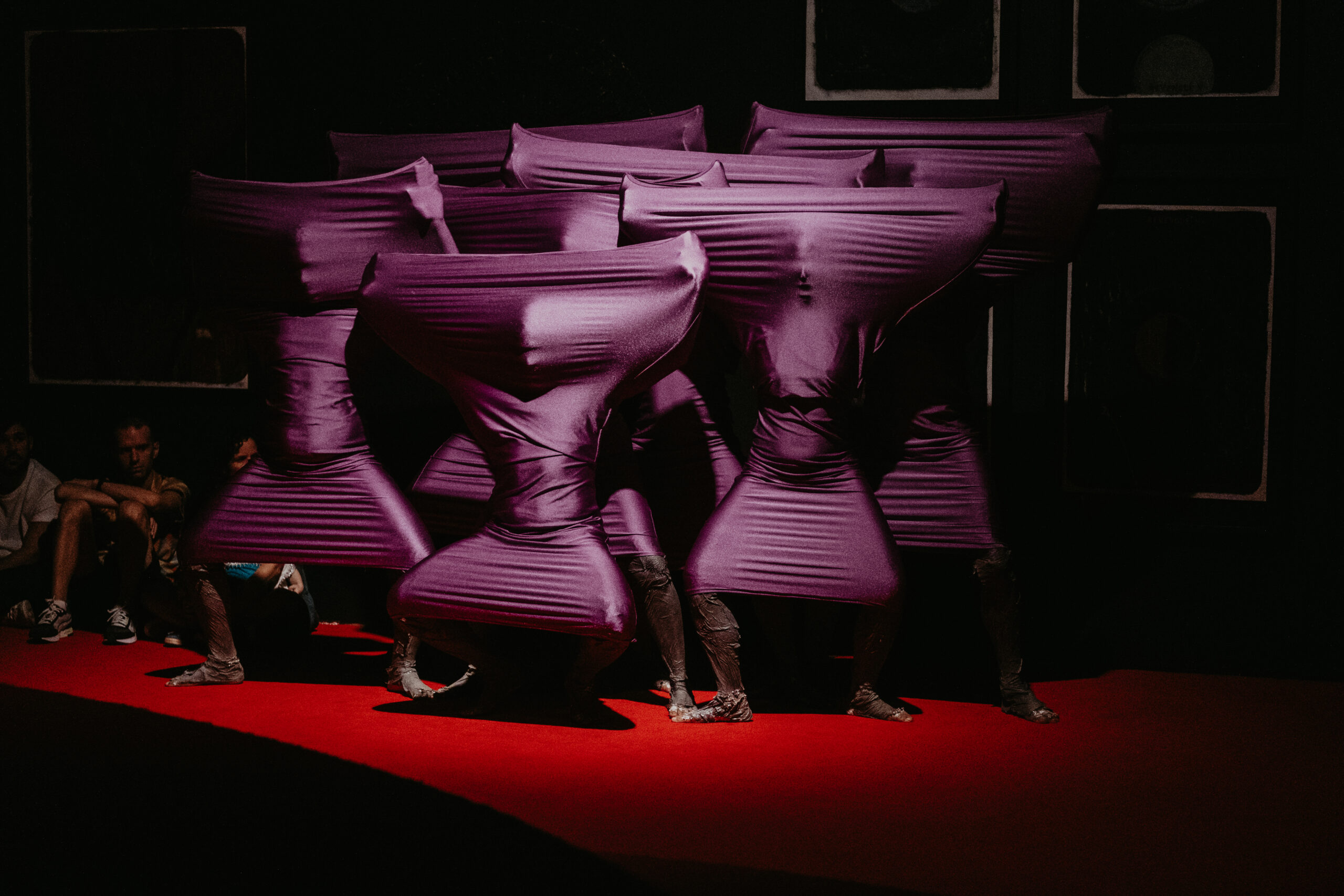
Three open mouths welcome us on our first arrival at Revenguê; these are the works that are part of the Arcadas series, one of the more than sixty unpublished works presented by Yhuri Cruz at Revenguê, the artist’s second mise-en-scene. Going further into the space of the room, new dimensions of Revenguê are revealed: it is about voices, sensations and images that offer us the possibility of understanding other manners of relating to the work as a whole, but in other way(s).
Contemplation, totality and revenge. How do we get to Revenguê? Beyond the materiality of the objects, how do we approach the aesthetic project that makes this revenge possible? Between deep reds, Revenguê exists in mystery, in the opacity and slowness of a full life. Here, we meet Pã Musa Vassauli, an inhabitant of the rocky planet Plenér, who leads us to Revenguê.
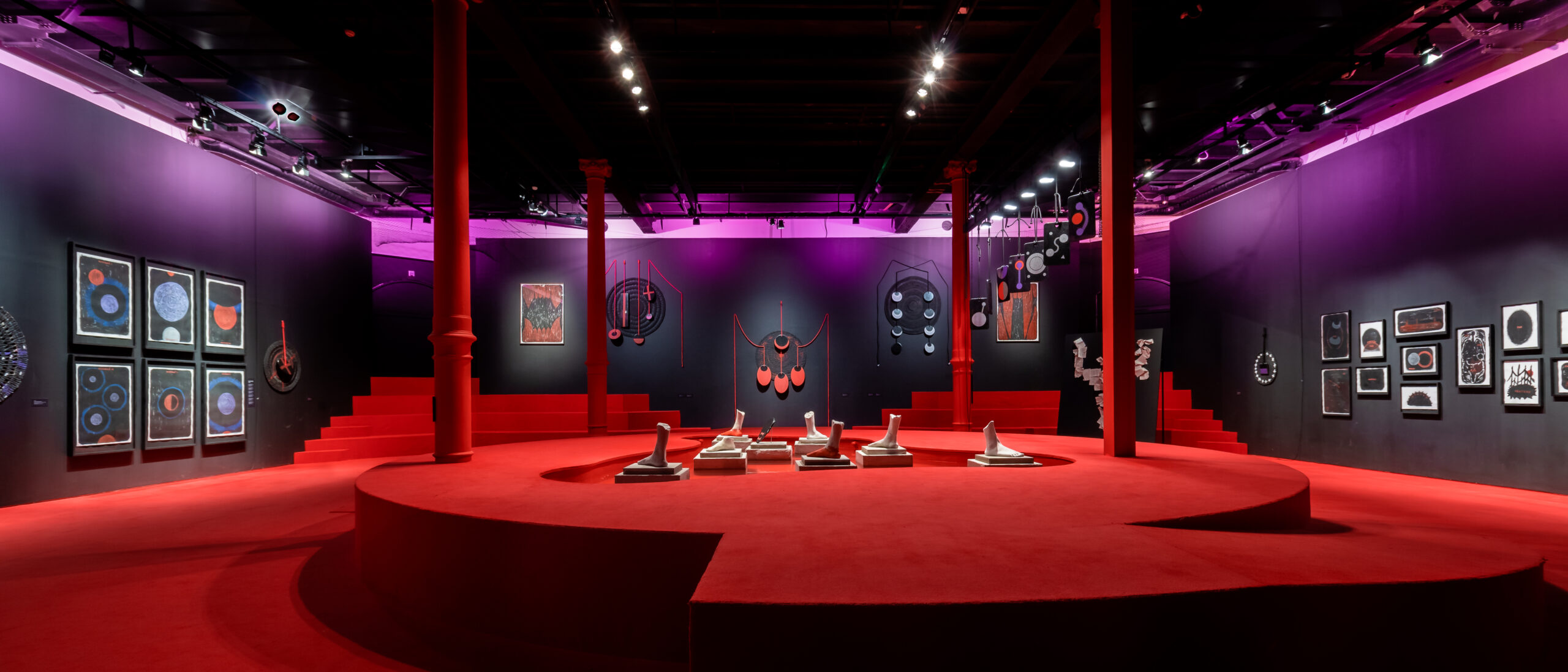
Here, we have something to think about. Revenguê offers us something to think about. Firstly because, in his own way, Cruz moves within the limits of staging and performance by reaffirming himself beyond this classification; including, in addition, works that reaffirm the layers of meaning on the symbolic universe of dramaturgy within the exhibition space. Thus, it is not just a question of understanding an “ideal form” for Revenguê, but of allowing oneself to inhabit it as a life project —of a life that exists and seeks its revenge beyond the determinations of the world we inhabit.
In terms of structure, Revenguê not only includes a staging, but also a set of works, voices and bodies that go through a temporary stay on our planet. In this sense, the composition of the objects is related to the scenic activation of those same objects through what I risk calling a ritual: an inscription, a movement, a “projection of space within a temporality that reflects it” —which in turn constitutes one of the pillars of Pretofagia, the negation of character—, giving way to a manner of working that becomes possible only through methexis.
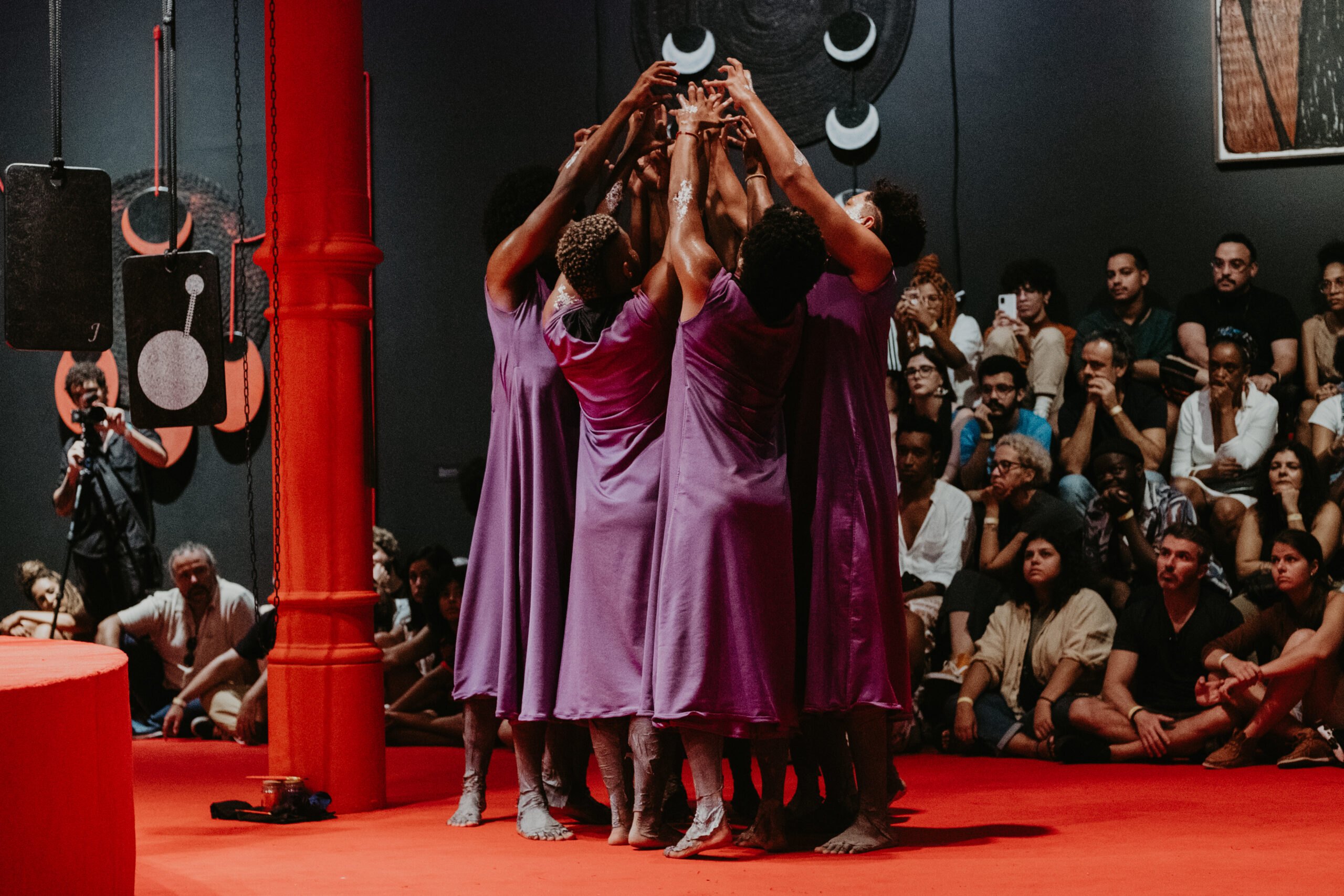
The works that make up Revenguê are unpublished works produced by the artist for this exhibition. Divided into series, they allow us visual contact with Pã’s path towards/on the planet Revenguê. These works are part of the record of boa morte (from the Altos Tumulos series), with spirits (from the Efeitos da Mare series), and the great mouth of Pã (from the Arcadas series) devouring us. Taking us on a journey through time, the Cartazes series for Revenguê and the Pã and Pies de Pã series introduce us to the different shapes of the planets Plenér and Revenguê, as well as the traveler who finds herself immersed in an intergalactic opera in search of a full life.
As a staged project, Revenguê is the seventh mise-en-scene of Pretofagia. We can understand Pretofagia, Cruz’s project, in three moments: as a staged project, an aesthetic project and a creative method. Like an ambush at the center, Pretofagia mobilizes a collective work that, in the artist’s words, betrays language and emancipates movements, producing a way of relating to the work that is not reduced to the colonial tools of art. Pretofagia is also a travel through time; Pretofagia dislocates linear time and our own perception of (space-)time.
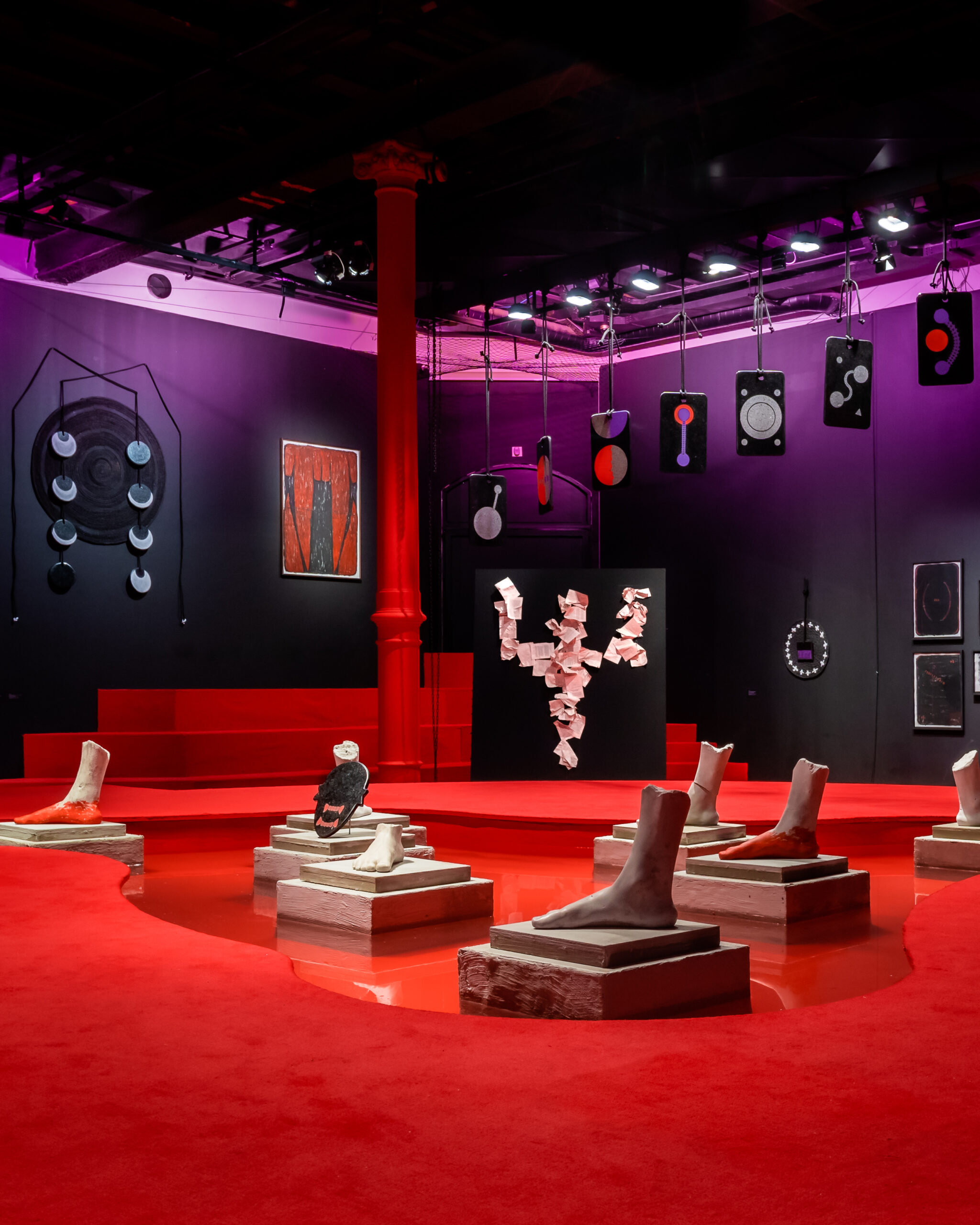
With a variable duration, between an hour and an hour and a half, the stagings of Revenguê take place almost in complete silence, with a single moment of speech —the one where Pã finally says his name—; these are slow scenes, without a climax, that activate and mobilize various senses. The presence of a grand piano on stage produces an atmosphere of rupture, an almost excessive lyricism, and, in the words of Fred Moten, we find Pã: “it is in this break, in this cut, in this constitutive rupture where the spectacle of black magic resides”. This is Revenguê‘s gift.
Revenguê proposes a slow movement that, according to Tina M. Campt: “It is more than a movement; it is a mode of amplification. It amplifies the sensation and tunes us into the intensities of microperception”. It is about silence —which is not precisely the absence of sound— and slowness as aesthetic spaces, as an ethic of care, thus building a planet where to feel, listen and choose to avenge life; it is cause for deep joy.
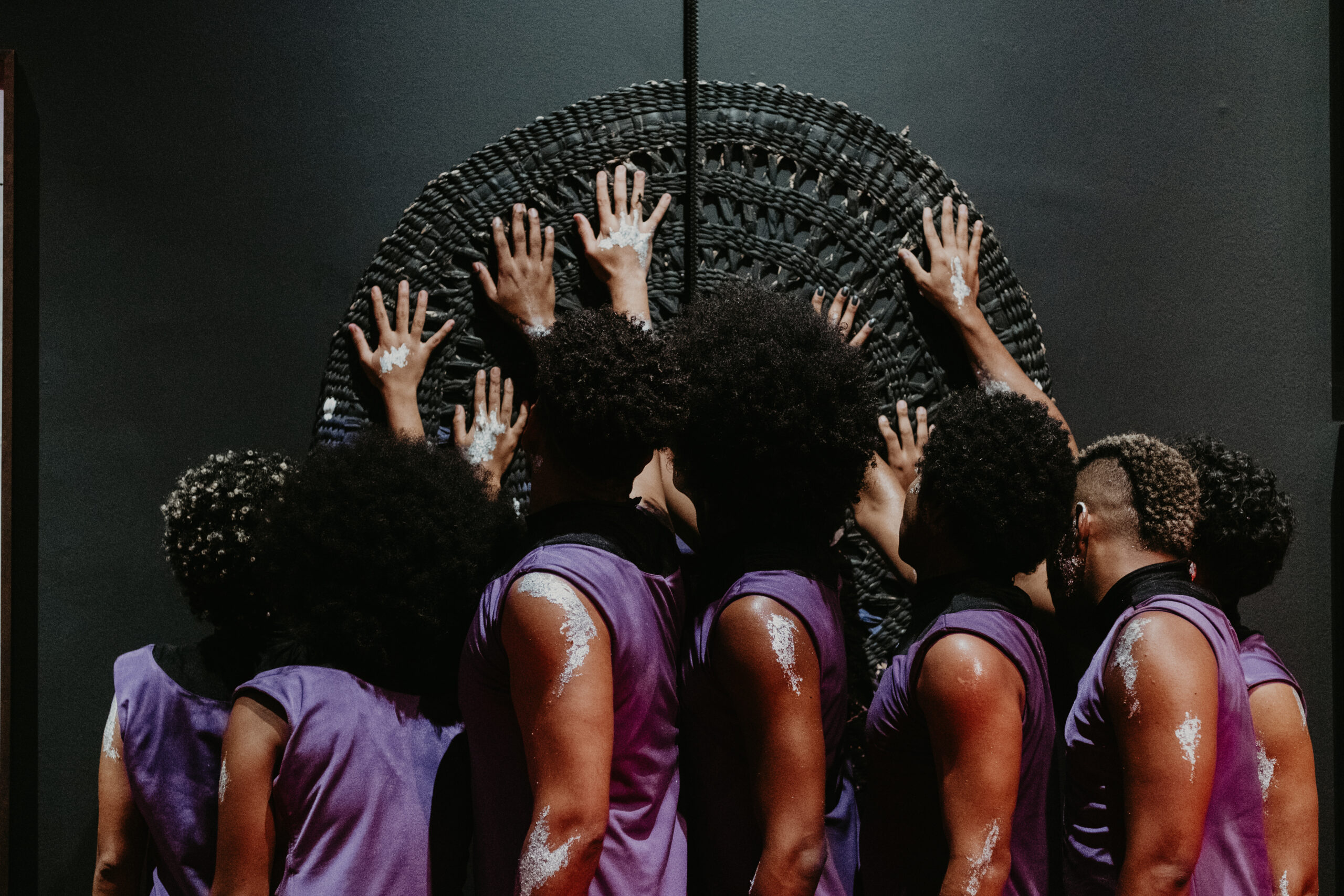
Meeting Yhuri Cruz
Visual artist, playwright and writer, Yhuri Cruz (Olaria, Rio de Janeiro, 1991) develops his artistic and literary practice from textual creations and performative (staged) propositions and installations articulating themes such as institutional critique, memory, presence and phantasmagoria. His most recent works produce monuments, scenes of visionary fiction, memorials, sculptures in stone and bronze, as well as an important textual production around Pretofagia, power relations and radical imagination. His productions range across drawing, text, image, choreography, voice, music, which are directly related to the exhibition space where they are presented. A time traveler, Yhuri Cruz produces scenes that promote encounters between different languages (such as performances and theatrical pieces) and denies them to the same extent, since it is about affirming Pretofagia as both a position of rejection and a creative method.
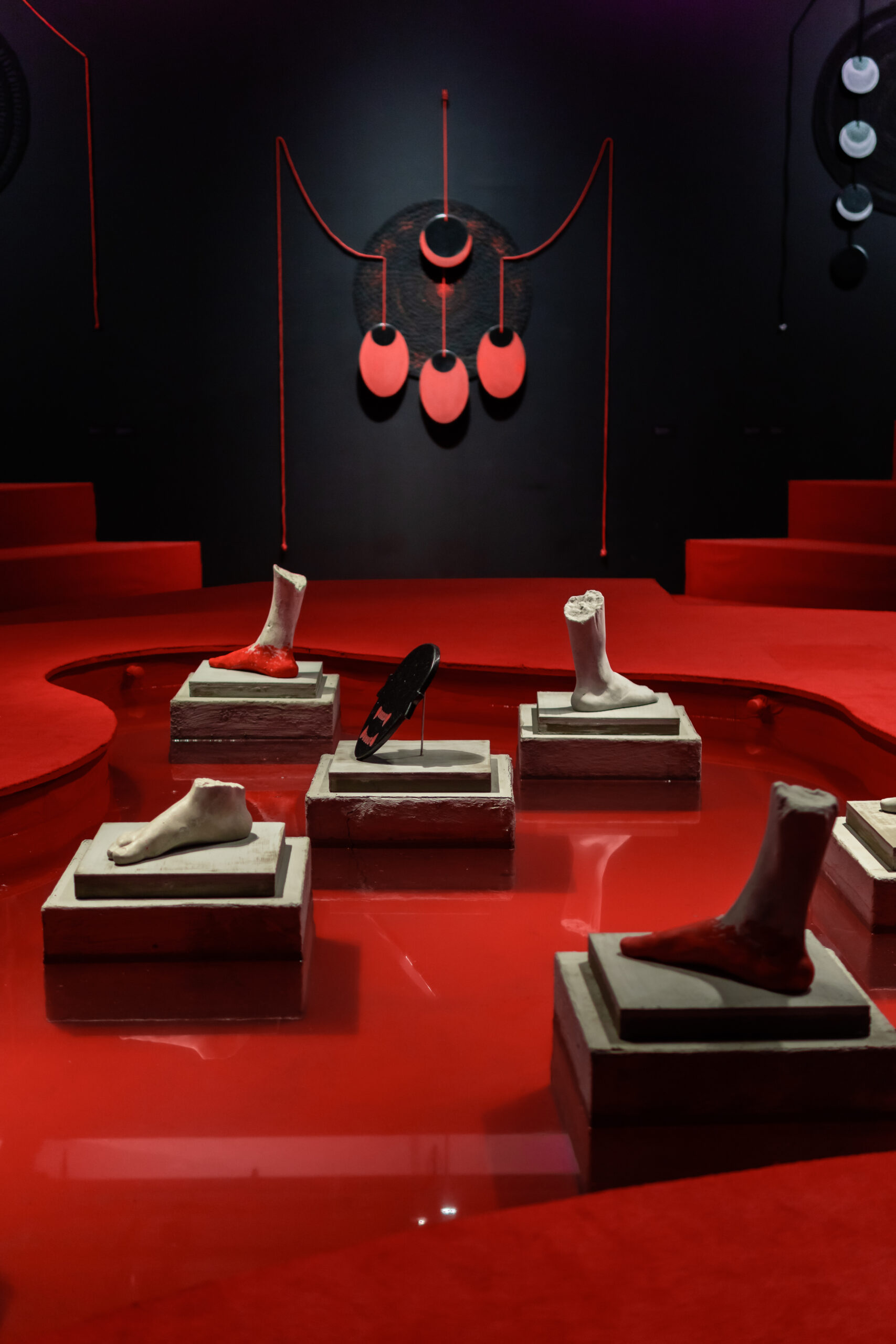
Revenguê is the second mise-en-scene and will remain open until October 1, 2023, from Tuesday to Sunday, at the Rio Art Museum (Rio de Janeiro, Brazil), with new stagings to be held on August 11 and 12 of the current year.
Comments
There are no coments available.